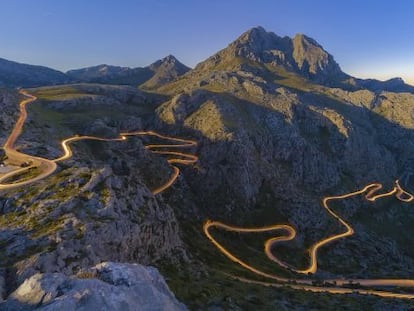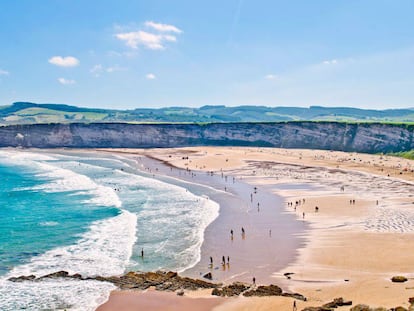10 destinations to escape the heat of the Spanish summer
From the icy waters of the C¨ªes Islands to the so-called "cold triangle" in Teruel, here are Spanish towns where you might need a jacket in the heat of August
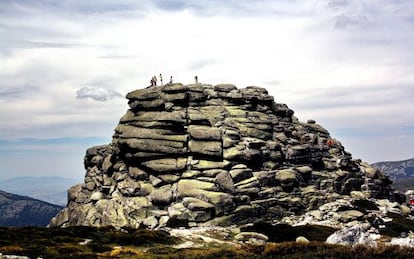
Believe it or not, there are some places in Spain where you can spend the summer with a jacket on ¨C places where the days are hot but the nights are cool, coastal towns with pleasant temperatures that hang around even when the sun comes up, and mountain hideaways just out of reach of the suffocating heat.
After consulting data from the Aemet, the state meteorological agency, and speaking with meteorologist Mar G¨®mez from eltiempo.es, here are our 10 suggestions for spots where you can escape the ¡°40?C in the shade¡± during your vacations this August.
Puebla de Lillo
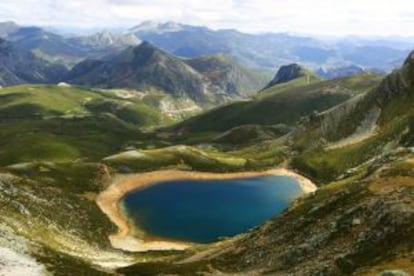
LE?N
Here in the Puerto de San Isidro, the mountain pass that connects the provinces of Le¨®n and Asturias, the median summer temperature doesn¡¯t exceed 12.5?C. In the surrounding area you¡¯ll find Medieval-era Puebla de Lillo, which was recently added to the Picos de Europa National Park. The town¡¯s tower, which used to be a watch-tower, prison, and city hall, is now the center of the Casa del Parque where visitors can get information on the surrounding landscape and better understand the relationship between man and nature. Between this town and Puerto de las Se?ales, near the edge of Parque Natural de Redes, you¡¯ll encounter Pinar de Lillo ¨C one of the very few indigenous pinewood forests on the pen¨ªnsula, home of the wood grouse and stomping ground of the brown bear.
Zumaia
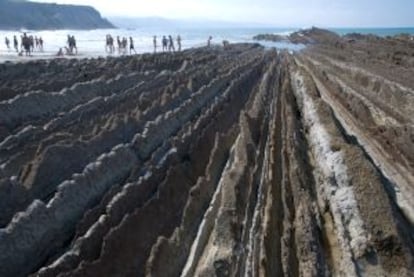
PA?S VASCO
The crew of the movie Ocho apellidos vascos shot the film in the tiny chapel of San Telmo on Itzurun beach, overlooking the cliff formed by the Zumaia Flysch (a sequence of hard rock strata of alternating color, differentiated by age and level of erosion). This town is found on one of the most beautiful stretches of the Guipuzcoana coastline, on the bay where the Urola and Narrondo rivers meet, surrounded by green mountains. The historic district retains its medieval layout, with pleasant summer temperatures averaging between 16.8?C and 24?C.
Cercedilla
MADRID
On the southern slope of Puerto de Navacerrada (Sierra de Guadarrama), eight kilometers from the ski station and 1,214 meters altitude, Cercedilla is the coolest part of the region of Madrid, with average summer temperatures from. It¡¯s surrounded by both peaks and ports, with Alto de Siete Picos (2,136 meters), Cerro Minguete (2,033 meters), Pe?a Cercial (1,999 meters) or the Pe?a del ?giula (2,012 meters) all close by. The area features two picturesque valleys (Fuenfr¨ªa and R¨ªo de Las Puentes), mountain slopes criss-crossed with ravines and gorges, bubbling streams, and waterfalls such as the famous Ducha de los Alemanes.
Sallent de G¨¢llego
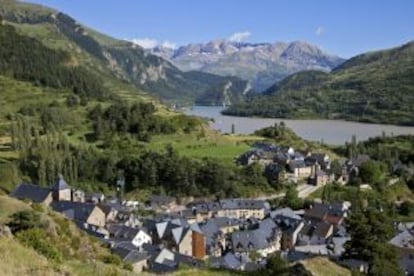
HUESCA
An example of the typical town tucked into the Aragon Pyrenees, Sallent de G¨¢llego is home to an early 16th century gothic church, home to an ornate silver altarpiece and an image of Our Lady of the Snow. North of Huesca, this town couldn¡¯t have chosen a more appropriate patron saint, sitting 1,350 meters above sea level and boasting an average summer temperature of 14.3?C. Located on the banks of the Lanuza reservoir, most of the municipality of Sallent de G¨¢llego is taken up by the Natural Monument of the Pyrenees Glaciers, eight mountains running for 90 kilometers along the Pyrenees. They snake between the valleys of the Gallego River to the west and the Noguera Tibagorzana River to the east, border Lledia, and are home to the most southern glaciers in all of Europe.
Cangas del Narcea
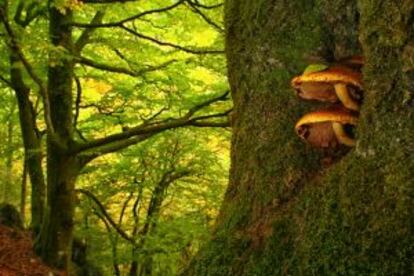
ASTURIAS
A large expanse of the Asturias, with mansions and rural palaces built between the 16th and 18th centuries, is occupied by the Natural Park of Narcea, Dega?a, and Ibiasia (UNESCO Biosphere Reserve). Within the park you can stroll the Muniellos Forest, the largest oak forest of Spain and one of the best conserved in all of Europe. These lands provide refuge for the Cantabrian brown bear, as well as for those seeking reprieve from the heat ¨C the temperature tends to range from 19.3?C to 25?C, with averaged lows around 13?C.
Molina de Arag¨®n
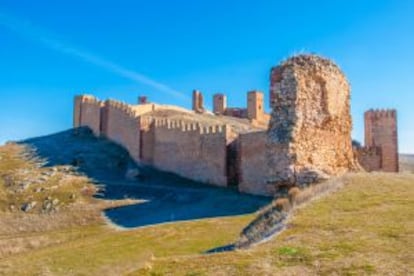
HUESCA
Historic Molina de Arag¨®n in Guadalajara province is home to a grand castle (known as the Fortaleza de Molina de los Caballeros), medieval streets, and Jewish and Moorish quarters. It forms one of the three points of what¡¯s known as the ¡°Cold Triangle,¡± the other two being Albarrac¨ªn and Calamocha, both in the Teruel region. The Sierra de Albarrac¨ªn has the town of Griegos, famous for being one of the coldest towns in Spain. Summer days in the area are hot, but as the afternoon winds down, winter clothing could be necessary. From June to August low temperatures can range from 12?C to 14?C, although there are warmer nights as well.
Ezcaray
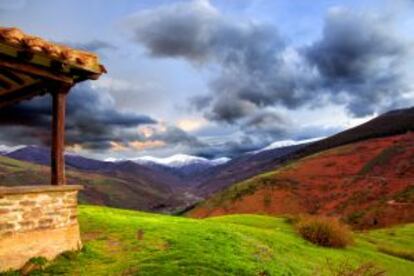
LA RIOJA
Ezcaray is the closest town to the ski station of Valdezcarey, located along the high part of Oja valley, southeast of La Rioja and in the far west of the Sierra de la Damanda. The town sees average summer highs of 27.5?C and lows of 12.3?C, as well as a famous jazz festival that warms the brisk night air. The modern part of the city is recognized for its well-conserved architecture as well as the porches in front of the houses that facilitate the calm pace of life even during the severity of winter. Ezcaray¡¯s breathtaking setting invites visitors to explore nature by hiking its many pathways.
Bellver de Cerdanya

LLEIDA
Nestled among the cluster of towns, farmhouses, and villages of La Cerdanya, close to the ski stations La Masella and La Molina in the Catalonian Pyrenees, an impressive cultural center in Rom¨¢nico has been conserved close to the Bellver population. This is where Gustavo Adolfo B¨¦cquer spent a few days in summer of 1860, even inspiring him to write The cross of the devil, which features certain spots in Barrio Antiguo (or Barrio de la Plaza). The warmest month, July, averages a temperature of 18.8?C. In this municipality you could find what many consider to be the coldest town in Spain: Talltendre, resting 1,600 meters above sea level, with three inhabitants as of 2009.
Isaba
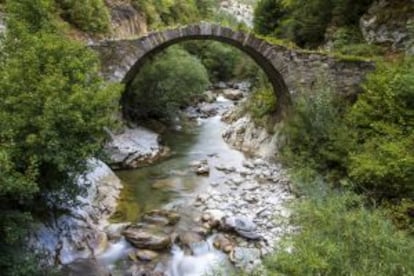
NAVARRA
Isaba, the most populous municipality of the seven that compose Roncal Valley in the Navarran Pyrenees, is bathed in the waters of Esca river and surrounded by mountains. Its average summer temperatures hang around 17.5?C, with fairly warm days but refreshing nights. The cobblestone streets of Isaba are narrow and dotted with stately homes made of stone and wood, all arranged around the 16th century church-fortress of San Cipriano that sits at the heart of the town. A coat of arms carved into the stone of the Uturrotx fountain depicts important moments in the valley¡¯s history, and in the cultural museum Casa de la Memoria travelers can learn about the region¡¯s traditional ways of life.
Islas C¨ªes
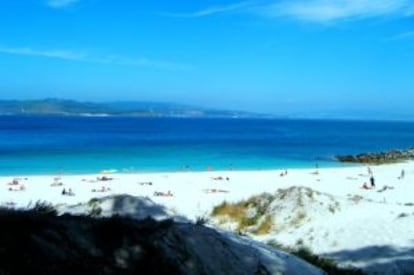
GALICIA
In this case, the cool breeze comes not from the high altitude, but from the ocean. While the area around the Baixas Rivers is has an oceanic climate, with high precipitation and moderate seasonality, both archipelagos of the National Park of the Galician Atlantic Islands (S¨¢lvora, Isla de Ons, and the Cies islands), are situated within a climate classified as ¡°sub-humid Mediterranean with Atlantic tendencies¡± ¨C meaning minimal rain, average temperatures between 13?C and 15?C, and little seasonal variability. Temperatures climb during the day, but visitors can always cool down by sticking their feet in the shore of Rodas beach on the Cies Islands, which has some of the coldest waters in Spain, reaching 15?C even in the middle of August.
?English version by Allison Light.
Tu suscripci¨®n se est¨¢ usando en otro dispositivo
?Quieres a?adir otro usuario a tu suscripci¨®n?
Si contin¨²as leyendo en este dispositivo, no se podr¨¢ leer en el otro.
FlechaTu suscripci¨®n se est¨¢ usando en otro dispositivo y solo puedes acceder a EL PA?S desde un dispositivo a la vez.
Si quieres compartir tu cuenta, cambia tu suscripci¨®n a la modalidad Premium, as¨ª podr¨¢s a?adir otro usuario. Cada uno acceder¨¢ con su propia cuenta de email, lo que os permitir¨¢ personalizar vuestra experiencia en EL PA?S.
?Tienes una suscripci¨®n de empresa? Accede aqu¨ª para contratar m¨¢s cuentas.
En el caso de no saber qui¨¦n est¨¢ usando tu cuenta, te recomendamos cambiar tu contrase?a aqu¨ª.
Si decides continuar compartiendo tu cuenta, este mensaje se mostrar¨¢ en tu dispositivo y en el de la otra persona que est¨¢ usando tu cuenta de forma indefinida, afectando a tu experiencia de lectura. Puedes consultar aqu¨ª los t¨¦rminos y condiciones de la suscripci¨®n digital.
